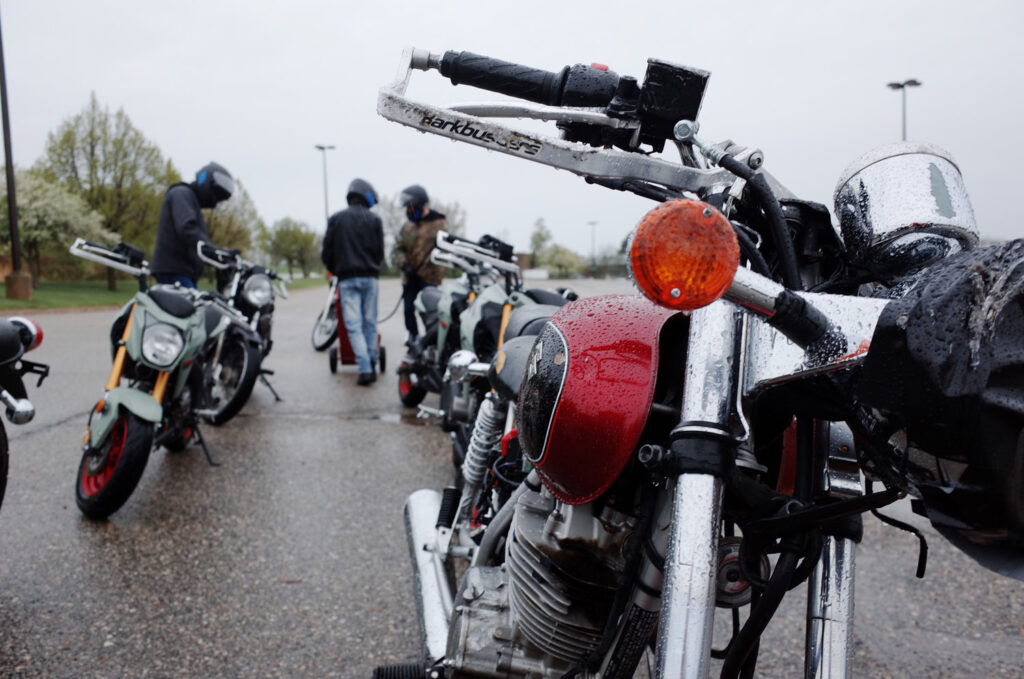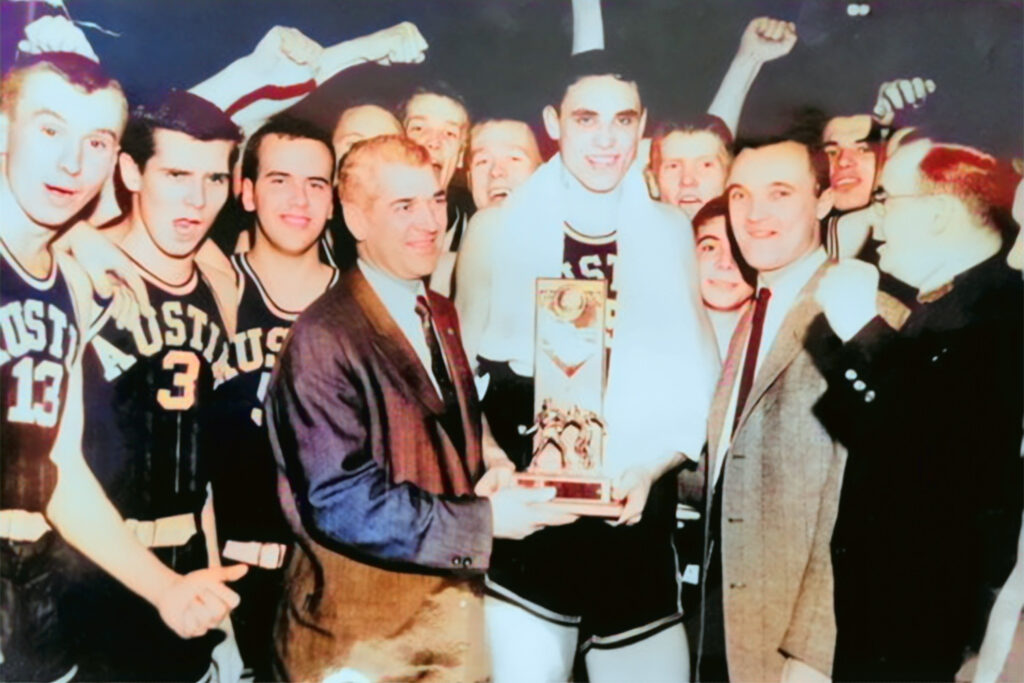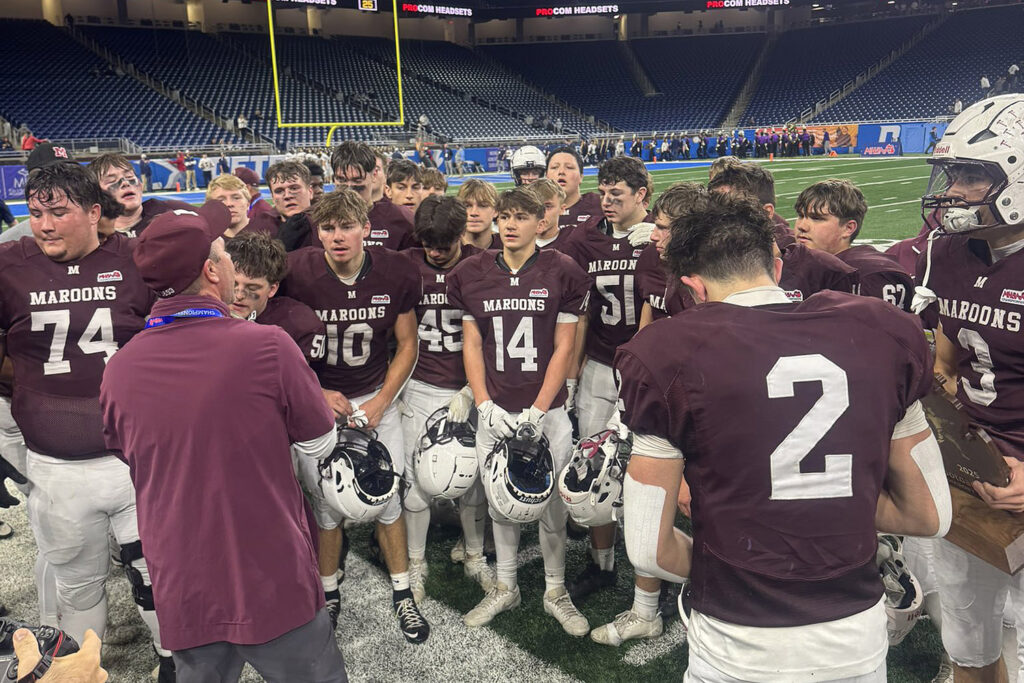Auburn Hills — It’s nearly midnight, and I can’t sleep. I can still feel the acceleration of the haggard Honda Nightwing I was riding earlier, the way you can feel rollercoasters or wave pools hours after the fun stops.
Instead of sleeping soundly after a big day, I’m scheming: How do I get another hit? I want more of that roar, those g-forces, that carbureted engine smell.
You need to take a written and road test to get your motorcycle’s license in Michigan. I wanted to see if I even liked to ride, so I took the state-mandated motorcycle course, through Oakland Community College, listed on the Secretary of State’s website.
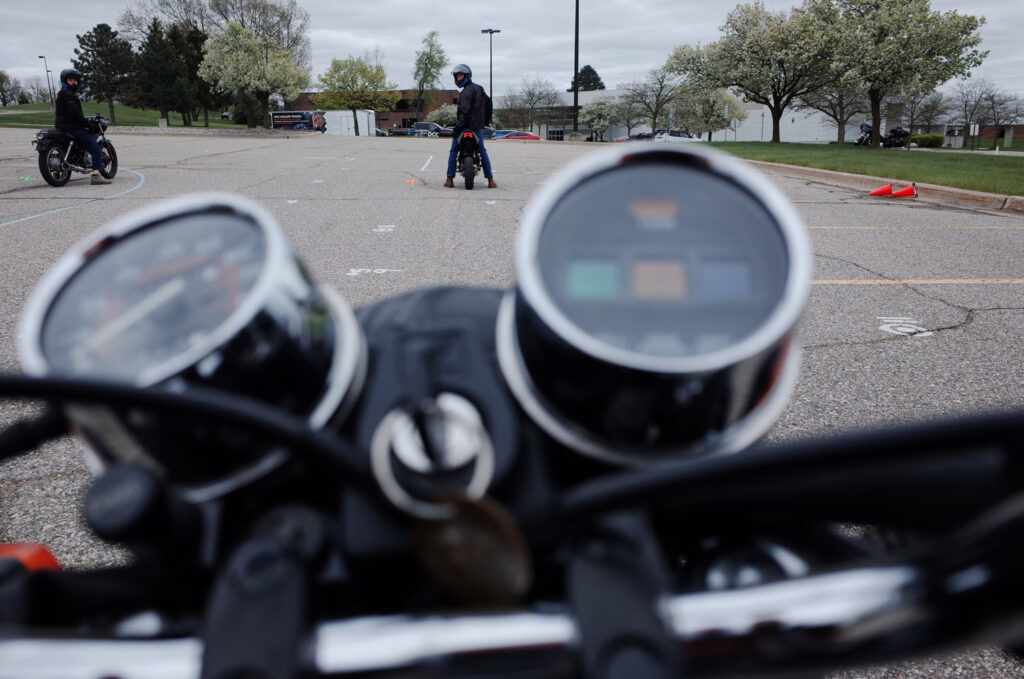
The class is set up in three stages. First, there’s a five-hour online class that goes over motorcycle basics, safety strategies, and skills.
Then, there’s a two-hour class Friday evening on campus. My classmates were a motley crew of adolescent and middle-aged Michiganders.
At one point, the instructor asked if there was anyone who could not ride a bicycle. Raymond, the kid next to me, meekly raised his hand. No one else seemed to notice.

We were spoonfed the answers to the test. You’d have to be asleep not to pass.
The next day, my cohort and I met at a parking lot to choose bikes and ride. The two Honda Nighthawks were the ugliest of the bunch.
The speedometer on mine broke thousands of miles ago, and the turn signals were barely hanging on. There were some new Kawasaki bikes to use. They had disc brakes and working speedometers. I tried one. It wasn’t for me.
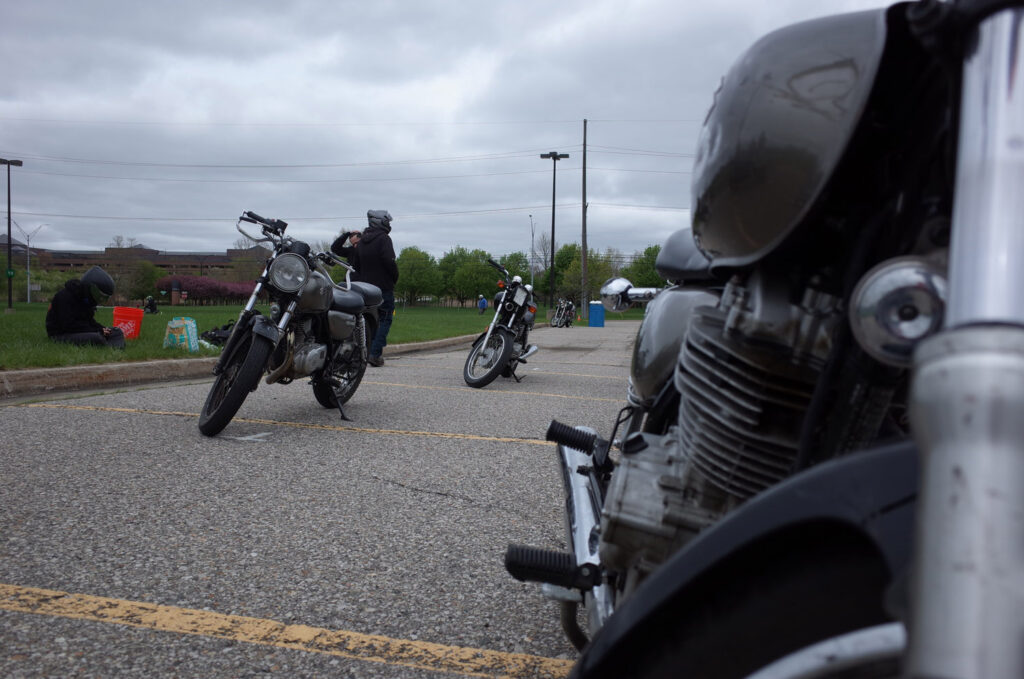
I struggled with the manual transmission. The trick is to get really friendly with the clutch, which allows you to shift and also provides power to the backwheel. It’s not intuitive, but by the end of the second day, I was comfortable with it.
And of course, there’s the throttle: the best part of the bike. Some of the exercises included putting the bike into second gear and cruising around cones in the parking lot to simulate curves at 15 to 25 mph.
I’m sure I wasn’t the only one grinning underneath my helmet.
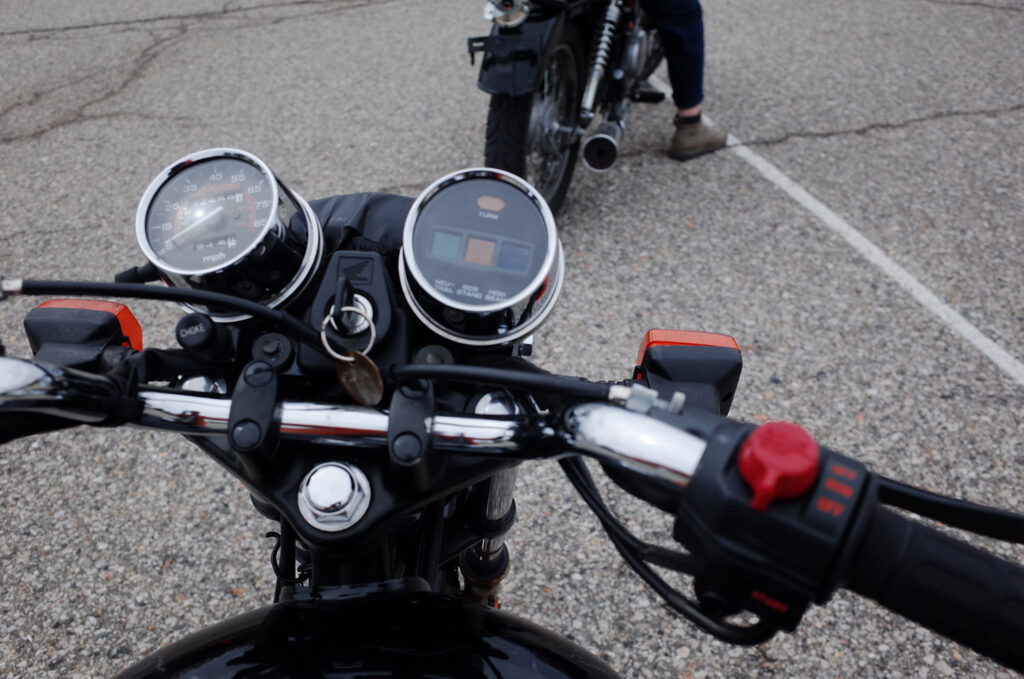
In the moment, I couldn’t remember the specific steps to taking a curve that the Motorcycle Safety Foundation had hammered into our brains during the online course and the two-hour class. But no one hurls out force-fed acronyms to learn to ride: If the turn is coming too fast, take it slower.
More helpful were when to use both brakes, what happens to your traction when you are turning, and where is the safest place to swerve in an emergency.
Thankfully, Jim and Nadir—our very helpful RiderCoaches™ —were present to make sure no one got really hurt.
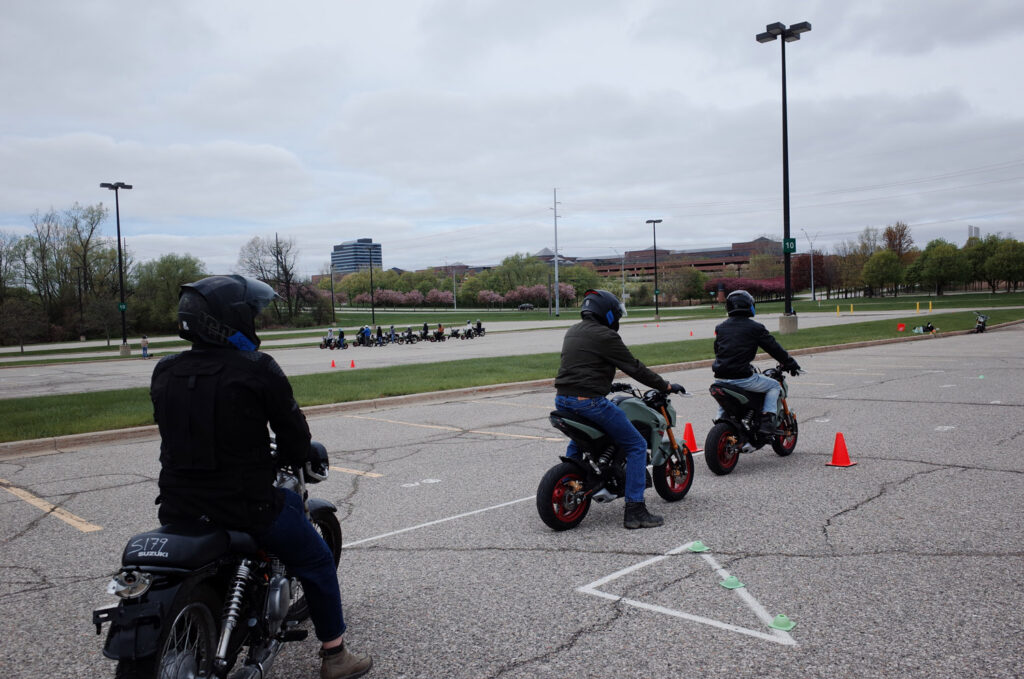
Some people struggled and failed in front of their peers. We saw someone drop a bike in the group in the next parking lot. Maybe it was Raymond, figuring it out.
During the second day, it was raining, and one of the coaches had dumped a bike in the morning section, warning us novices that the day’s training exercises were much more difficult than the previous day.
In a few hours, I was freezing, and I stopped having as much fun. (I’m not about to trade my warm car for a crotch rocket anytime soon.)
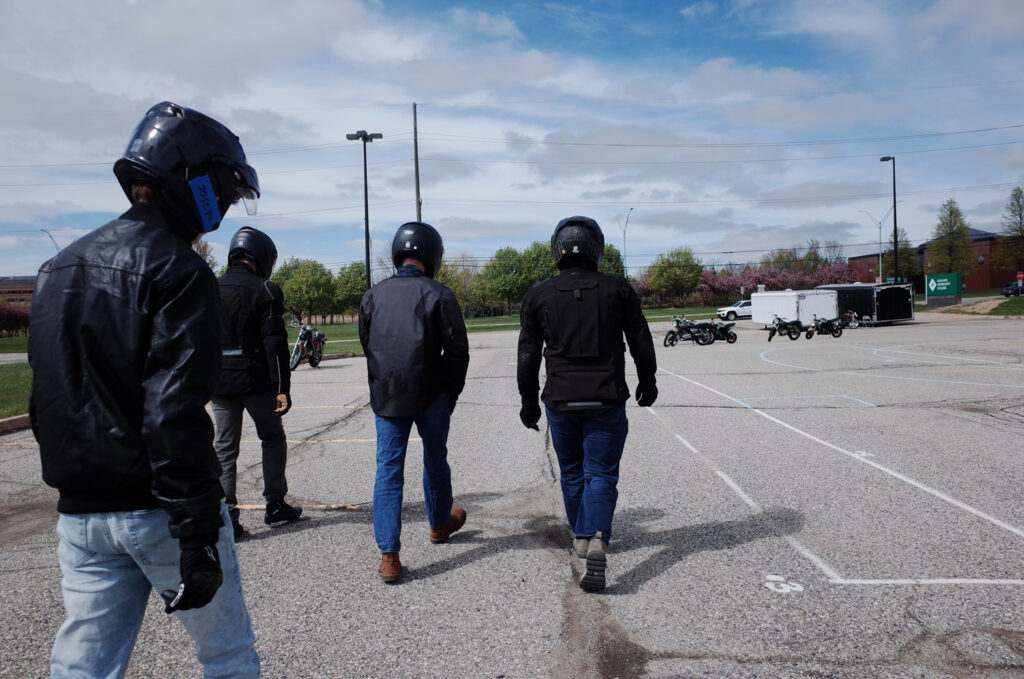
After the progressively more difficult exercises of swerving through cones, turning corners, stopping, and speeding up, it was finally time for the evaluation.
There are five parts to the test: swerving, a perimeter turn, a left-hand U-turn, stopping in time, swerving in time, and reaching a high speed before taking a smooth curve and coming to a complete stop.
I got a perfect score, even though I could barely feel my fingers. Only three of the eight of us in the class received the best score: zero points. One poor guy didn’t pass at all, but he was given a form to enroll again in a future class.
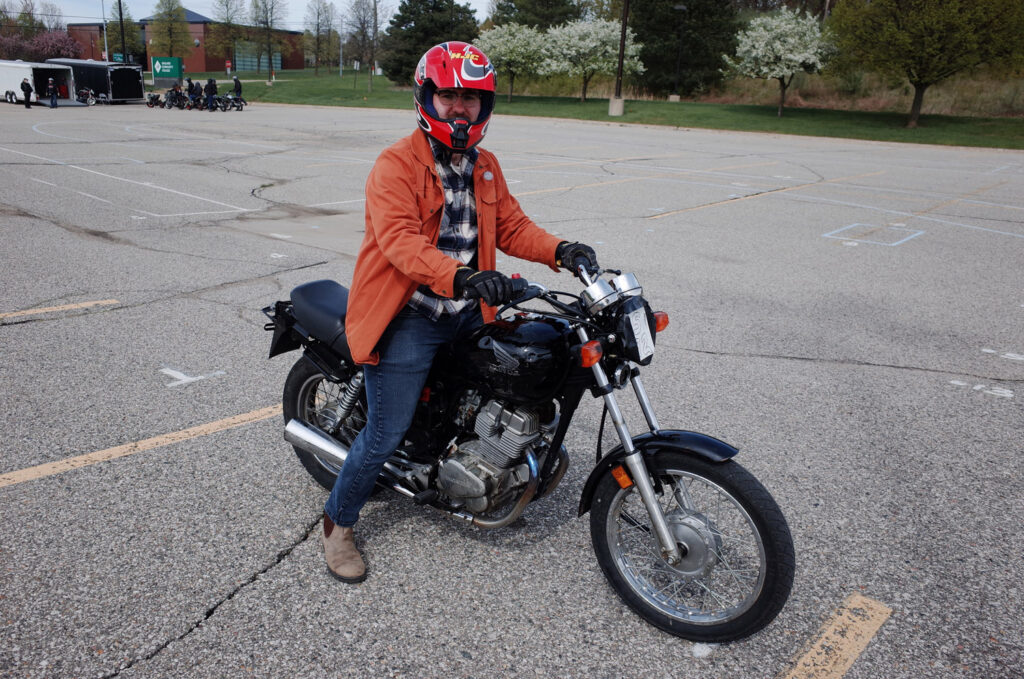
Now that I will soon have the little “CY” endorsement on my driver’s license, the true challenge begins: getting a motorcycle I can cruise Michigan’s backroads with this spring.
Maybe when I get one I can finally get some sleep.
Brendan Clarey is deputy editor of Michigan Enjoyer.
